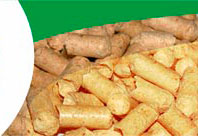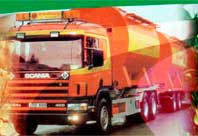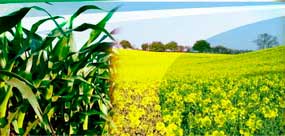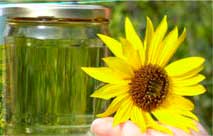Raw materials and wood pellet production capacity in Germany
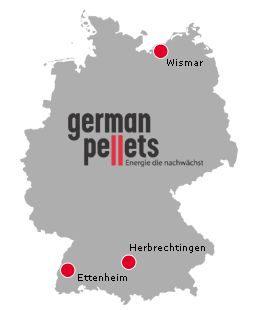
About 30% of Germany is covered with woodland and the wood volume increases by about 60 million cubic metres per year. Bavaria is the most densely wooded Federal State in Germany.
6-1: Forest area in Germany/Bavaria
|
Region |
Forest land |
Fuel wood / forest waste products |
|
|
[hectare] |
[1,000 m3/a] |
[tons/a] |
|
|
Bavaria |
2,415,550 |
6,390 |
1,597,389 |
|
Germany |
10,430,138 |
25,323 |
6,330,750 |
Table 6-2: Annual amount of wood useable as fuel in Germany
|
Sort of wood |
Amount [million m3] |
|
Fuel wood from forests |
4.5 |
|
Scrap wood from sawmills and commercial timber |
7.0 |
|
Forest waste products |
2.0 |
|
Total |
13.5 |
Of the total wood reserves in German forests an average of 40 million cubic metres is used annually, while about 20 million cubic metres per year remain in the forests. At least 20% of the average amount used annually - 8 million cubic metres - could be made available for the production of wood pellets. Realistically, however, only scrap wood, wood shavings and sawdust from the wood and timber industry (sawmills) and forest waste products would be available as raw material for pelletising. The following table which is based on wood statistics and material flow analysis shows the potential of fuel wood in Germany.
Pellet production in Germany
Commercial pellet production has started in several locations in Germany in the last two years. Germany now has about six to eight special manufacturers of wood pellets already producing and several plants are in planning. If pellet demand increases in the future, scrap wood from the woodworking industry will be re-routed for pellet production. Whether scrap wood will be used for energy or non-energy purposes will depend to a large extent on the prices that suppliers can achieve for their products.
Use of wood pellets
Like production the combustion of wood pellets is still in its early stages in Germany, but the interest in wood pellet heating systems is rapidly growing. The use of pellets for heating is mainly concentrated on the niche market of low energy houses with an annual fuel consumption of around 1,500 kg per 100 m2 living space. German furnace manufacturers have responded to the recent growth in the pellet market. The technical development of small wood-burning stoves (2 to 8 kW) and boilers (8 to 25 kW) has progressed considerably in the last years. However, most units are currently imported from Austria, Denmark and Sweden.
Subsidies to heating system owners
The trend towards a convenient and environmentally sound heating system is growing and sponsored by a special government programme which provides 60 € per installed kW and a minimum of 2,000 € per system to the customers.
Standard specifications for pressed wood
The German DIN 51731, valid since October 1996, determines specific requirements and test procedures for natural pressed wood. The specified pressed wood is designated to be used in wood burning furnaces. Natural wood is characterised as mechanically treated wood which contains only a minimum level of harmful substances. The following limits of harmful substances, referring to absolute dry wood, have to be kept.
Pressed wood classified according to the DIN standard has to comply with the following requirements: Relative density: 1.000 - 1.400 kg/m3, Moisture content: < 12 %, Ash residue: < 1,5 %, Calorific value: 4,8 - 5,4 kWh/kg
Pressed wood can be described as wood pellets or wood briquettes. Table 6-4 indicates the requirements on the dimensions and shows the classification of the pressed wood.
Table 6-3: Limits of harmful substances according to DIN 51731
|
Element or compound Limit |
|
|
Sulphur |
0,08 % |
|
Chlorine |
0,03 % |
|
Nitrogen |
0,3 % |
|
Arsenic |
0,8 mg/kg |
|
Cadmium |
0,5 mg/kg |
|
Chromium |
8 mg/kg |
|
Copper |
5 mg/kg |
|
Mercury |
0,05 mg/kg |
|
Lead |
10 mg/kg |
|
Zinc |
100 mg/kg |
|
Halogens |
3 mg/kg |
Any copying and distributing the material of Ukrainian Biofuel Portal
without active hyperlink is stricly prohibited !
Copy & Paste This Code to your website:
Views: 7766 Published: 12-05-2011
Average Rating:
Raw materials and wood pellet production capacity in Germany


